FICTIONAL MEETING WITH MARIA SIBYLLA MERIAN (1647-1717)
Mrs Merian, you are from Frankfurt and lived in Amsterdam for the second half of your life. There you became world famous as an artist and entomologist. How was your childhood in Frankfurt?
I grew up in what you now call a "patchwork family". My father, the famous draughtsman, etcher and publisher Matthäus Merian the Elder, unfortunately died when I was only three years old. My mother, as was customary at the time, soon married again. Jakob Marrell was also widowed and brought children into the marriage. He was a good father to all of us, even we girls were allowed to help in his workshop.
How did you come to be the wife of Johann Andreas Graff, a citizen of Nuremberg?
When I was six years old, a new apprentice came to us from Nuremberg. Johann Andreas Graff was orphaned early and for five years we became his family. He then went to Italy to learn everything that was new and trendy in art at the time. When he came back after six years, our workshop was far less busy, but now a new, active phase of my life began.
In the printed (!) wedding poems by our relatives and friends, you can still read that everyone praised both of us for our artistic talents, and that it was clear from the start that I did not want to, and was not destined to, become a mere "housewife". I especially like the humorous sentence by a friend: "Daub to outdo each other till you drop!" (Drumb pinselt umb die Wett!)
By the way, in these wedding poems I am called "Merianin" and after our wedding "Frau Gräffin". The female ending (-in) on the family name was normal at that time, and I am glad that this is now observed in Nuremberg again.
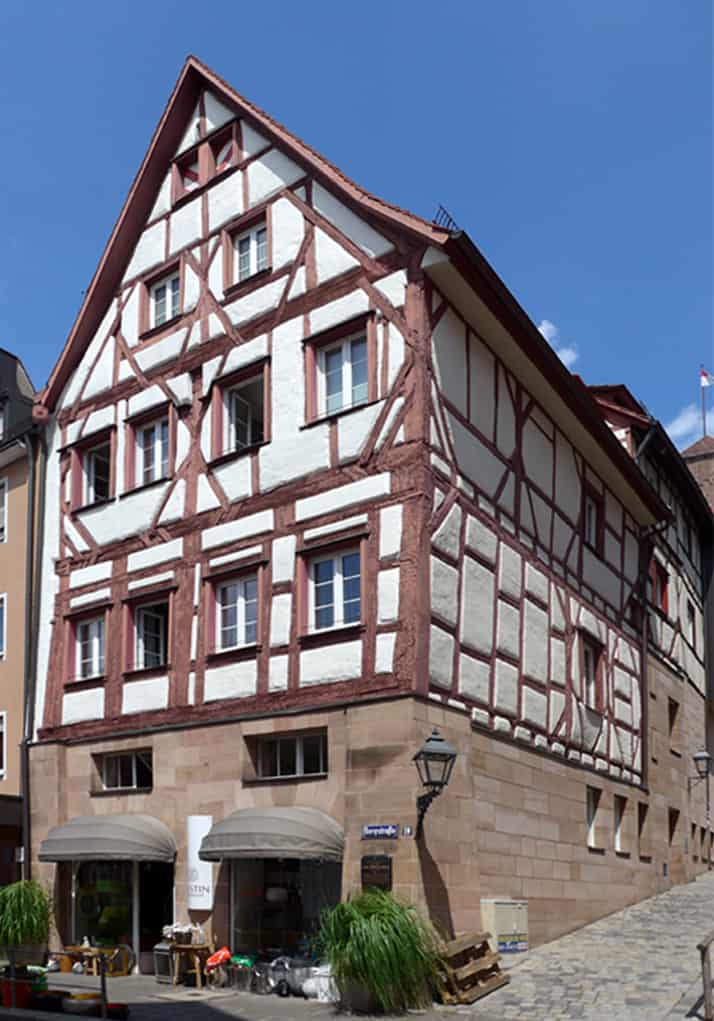
Dwelling House of the Graff Family in Bergstraße 10 (Photo: Dieter Lölhöffel)
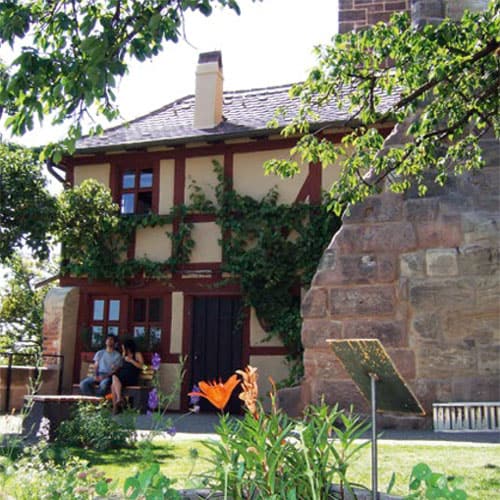
Maria Sibylla Merian Garden since 2013 (Photo: Dieter Lölhöffel)
In the literature about you, Nuremberg often appears only as a stopover in your life. Do you still have memories of our city?
The move to Nuremberg together with my husband and our first daughter, Johanna Helena, born only a few months previously, took several days and was a great experience for me. Girls and women with children travelled only rarely at that time. I saw unknown landscapes and cities and shall never forget the first view of Nuremberg with its strong city walls, high towers and the impressive Imperial Castle. The stately, half-timbered house “At the Golden Sun” (Zur Goldenen Sonne), was a beautiful new home. It was located on the "Old Milk Market" (Alter Milchmarkt) between St. Sebaldus’s Church and the Imperial Castle and my husband had inherited it from his parents.
Was this first impression confirmed in the course of your fourteen years in Nuremberg, or are some novelists right in drawing a dark, oppressive picture of Nuremberg and characterizing your husband as an incapable, aggressive drunkard?
It's really annoying how far some authors falsify reality for the sake of drama. Without the active support of my husband, my three flower books and two caterpillar books, that is, a total of five printed works, would never have been published in my Nuremberg years. I was even allowed to teach daughters of Nuremberg families how to paint and embroider. One of the directors of the Academy of Painting, which was founded as an important cultural institution at the end of the terrible Thirty Years' War, gave me lessons.
The well-to-do citizens opened their gardens to me so that I could observe and collect the caterpillars on their host plants. An influential relative of one of my students let our family use a beautifully situated garden next to the Imperial Chapel at the Castle. All these favourable living conditions contributed to the fact that I was able to develop my skills in Nuremberg and that the life cycle of insects became the lifelong theme of my artistic and research work.
You surely know that our family house survived, undamaged, the terrible destruction of Nuremberg during the (hopefully!) last European War, which you call the "Second World War", as did the two-storey garden house in our garden, which is made of sturdy timber framing. Today this garden is a place of remembrance named after me.
What fascinated you most?
It was the surprising changes from eggs to caterpillars and pupae to a new living being, that is, their metamorphosis, the result of which was not always a magnificent butterfly. I loved the "summer birds", which you now call diurnal butterflies, but paid the same attention to my "moths", your nocturnal butterflies. I did not distinguish between so-called beneficial insects and pests. In my artistic work I wanted to use God's creation in all its diversity, including the life cycle of beneficial bees and silkworms, as well as beetles and flies, all of them portrayed with their own individual flora.
Why did you and your family leave Nuremberg again after fourteen successful years?
After the death of my foster father, we felt obliged to take particularly scrupulous care of my impoverished, aged mother in Frankfurt. But the living conditions there did not turn out as we had hoped, and four years later we moved to a strictly religious Labadist community in Friesland. However, Johann Andreas was not accepted into this religious community and I separated from him for good. I do not wish to make detailed public statements about the breakdown of our marriage and ask for your understanding.
Was the separation from your husband the complete end of your relations with Nuremberg?
No! Not at all! I became increasingly active as a businesswoman who sold her books and her prepared natural objects ‒ like crocodiles, snakes and turtles ‒ to Nuremberg. After my spectacular expedition to the Dutch colony of Surinam in South America, I even created a large-format work about the magnificent tropical insects and their plants, commissioned etchers and printers and took the considerable risk involved in publishing the book. The German National Museum owns a particularly precious and hand coloured copy.
What can the people of Nuremberg at the beginning of the 21st century learn from you and your time?
People in the centuries following my research praised my close examination of the insect world and my love of nature, which I shared with the people of Nuremberg. They were probably the greatest garden lovers in Europe at the time. Nowhere else was there such a green belt with hundreds of private gardens around the city wall, stretching up to the outer fortifications by the moat with its redoubts. Doctors, pharmacists, merchants, craftsmen, innkeepers, in short, many Nuremberg families, not only from the upper classes, liked to relax in their gardens in summer and take refuge from the heat and stench of the narrow city streets.
In addition to fruit trees and bushes, vegetables, herbs and flowers as a habitat for birds, insects and the descendants of Dürer's rabbits, well-to-do Nuremberg citizens cultivated a special hobby: they imported expensive citrus plants from Italy and spared no effort to ensure these sensitive immigrants could survive the cold season in heated garden houses.
I know that the city's residential area has now expanded far into the surrounding countryside, but everywhere you can find opportunities to return to this wonderful tradition of the Nuremberg gardens. All existing trees in the city need sustainable care. Attentive, thoughtful citizens should not be discouraged and should always suggest new locations for trees. Generous circular beds planted below and around the trees are also a habitat for my beloved insects.
But I don't want to give you a longwinded lecture. I like the way you can briefly and impressively sum up your wishes today, 350 years after I came to your city. I'd like to try that, too.
- I have already mentioned the colourful, planted circular beds below more and more city trees in Nuremberg.
- Balcony boxes offer space for herbs, which not only enrich your diet in a healthy way, but also provide food for insects.
- Beds in private gardens with nectar-rich flowers are a small paradise for bees and butterflies.
- There is plenty of space for flower meadows in parks, cemeteries and on the banks of the River Pegnitz next to green lawns.
The initiative "MERIANIN 2018+ New habitat for insects" will be happy to provide information about these and additional possibilities. I am pleased my world-famous name can help to open people's eyes once again to an understanding of how desperately in need of protection our natural environment is. I'm happy to accept patronage of that and pleased to see that you started your initiative in support of my "summer birds", "moths", bees and other insects exactly 350 years after I had moved to Nuremberg. This is a nice jubilee present and shows you are interested in the history of your own city. I have been told that in the 21st century you know that "The future needs origins!" or ‒ expressed in your contemporary coinage ‒ "Past Forward!".
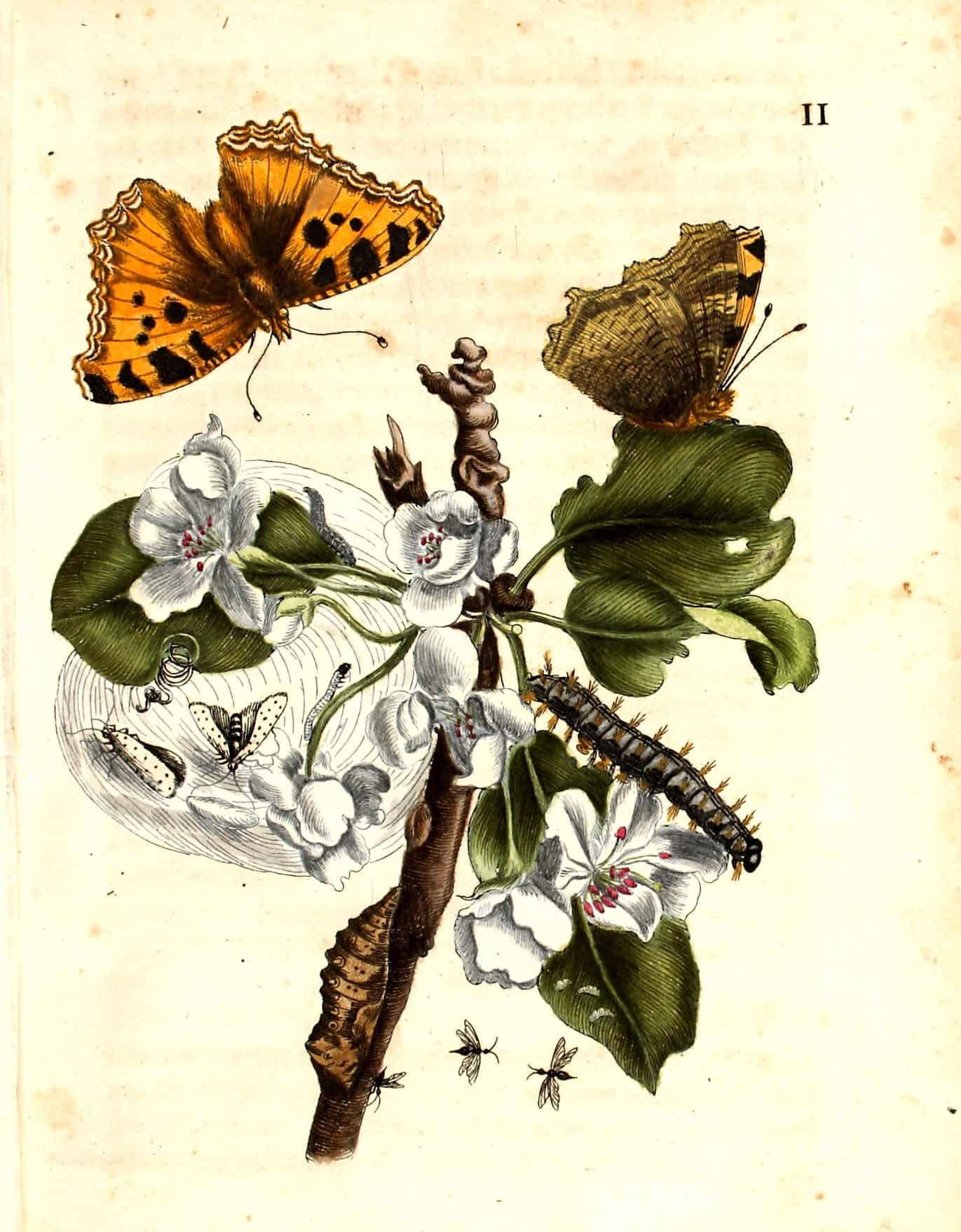
Branch of a Pear Tree with Large Tortoiseshell Butterfly (2)
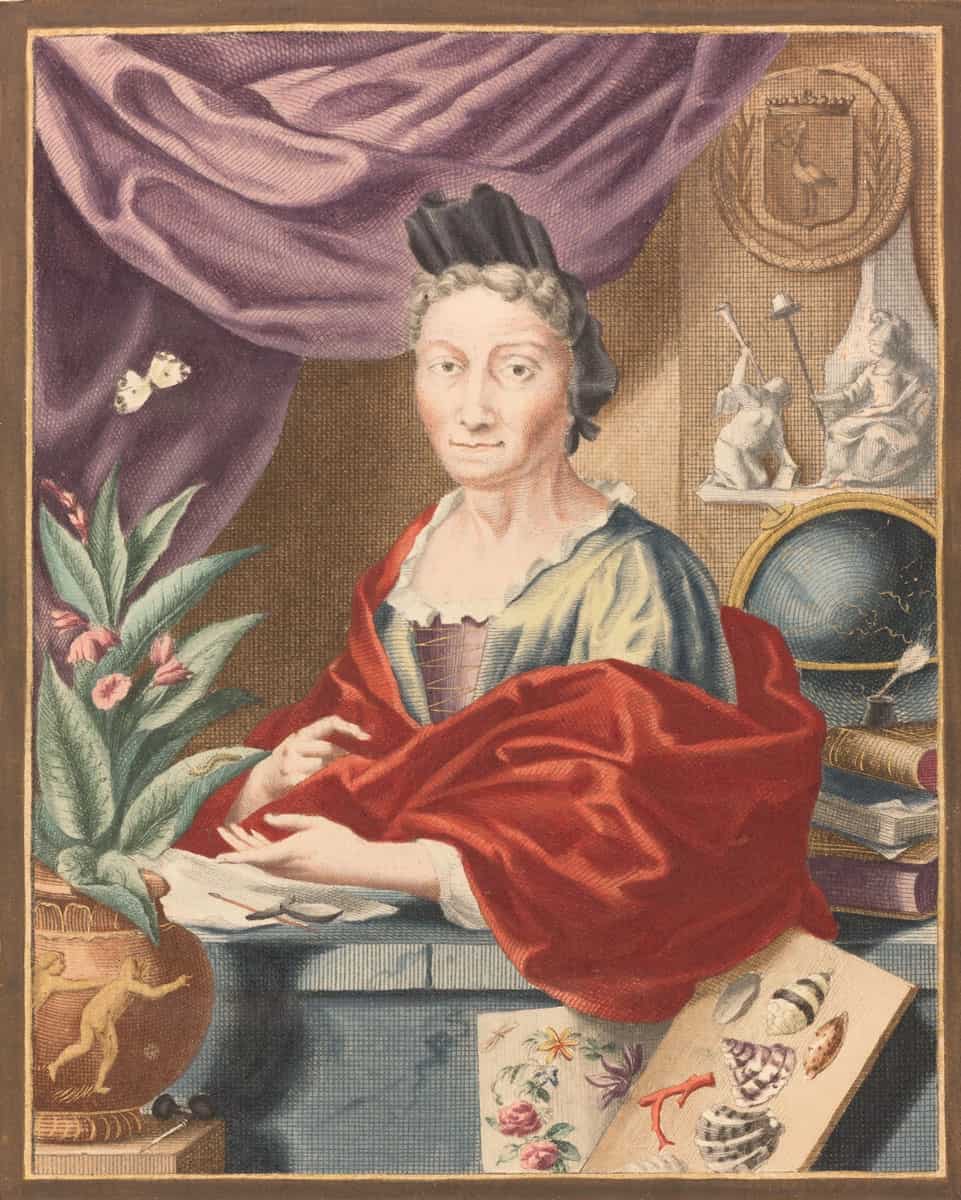
My Portrait as an Old Lady in Amsterdam (3)
A MULTI-VOICED RADIO PORTRAIT
Since 2018, when a fictitious interview was conducted with Maria Sibylla Merian, albeit one as close to reality as possible, further novels have been published which often stray very far from the historical personality of Merian and her time, often with new imaginative embellishments.
By contrast, the audio portrait in the "Long Night with Maria Sibylla Merian" by Deutschlandradio and Deutschlandfunk Kultur conveys an authentic image of the protagonist that is well worth listening to, but available only in German:
It is very gratifying that Merian has been given a say so often. We know of no other publication (written, acoustic or visual) in which she is so present. Mostly she is reported on, but the author Halina Dyrschka has included many original quotations in her broadcast. They are recited by a female radio speaker so empathically that Merian might be speaking in person. Thus it becomes clear - at last! - after more than 350 years how much this "first ecologist" still has to tell us today.
However, new research is also presented. It is particularly important that the most important Merian expert, Professor Wettengl, is, in many places, able to contribute his immense knowledge, including hitherto little-known details, in a clear and comprehensible way. He is and remains our guiding light for our research into Merian. In addition, several other competent scholars and a curious observer from Nuremberg were interviewed. This radio programme was not produced in Nuremberg, it was made in Berlin, but Nuremberg is discussed intensively.
This feature is magical to listen to and the three hours of this "Long Night" quickly fly by. It was broadcast in mid-April 2023 and can now be accessed in the archive. Even short clicks at random points during the broadcast are interesting if there is not enough time for the entire broadcast. :
Together with the perfect background of music, this programme is a real masterpiece that is worth listening to even during routine activities, when your eyes are otherwise occupied, such as when ironing, cooking or doing handicrafts.
This radio feature from April 15th 2023 can now be clicked on here listened to and downloaded from the archive of Deutschlandfunk Kultur.
A QR code is also available as an alternative:


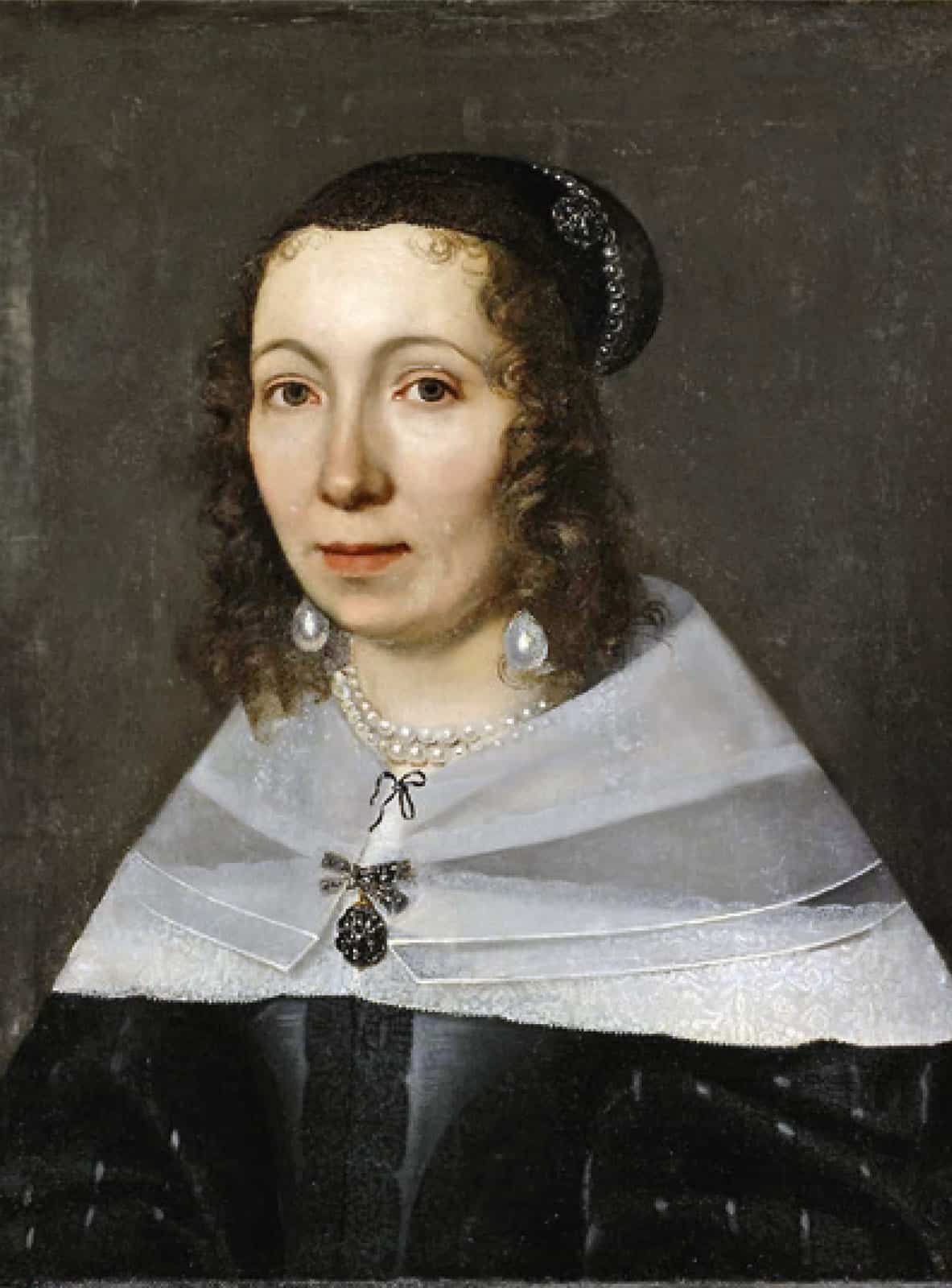
Announcement on the radio: "The highly gifted painter and etcher devoted her entire life to the study of the insect world."



